PRODUCTION BOARDS (The Key to Filmmaking Success (Learn How… 11 Simple Steps)
by Dov S-S Simens on May 13, 2019
2 REASONS A PRODUCER/DIRECTOR/WRITER FAILS AS A FILMMAKER
First is falling in love with a Poor-Fair Script and the Second lies in not preparing a Production Board (aka: Shooting Schedule) to be organized for your shoot.
Huh? What do I mean (as if it ain’t obvious).
First is Screenwriting. If “It Ain’t On the Page, It Ain’t On the Stage”. If you have written a screenplay without a proper “Beat Sheet” (aka: Step Outline) you are guaranteed to fail.
Yes, you might (A) have the script and (B) get some financing and (C) make the film but if “It Ain’t On the Page, It Ain’t On the Stage” and your final product will not get past a film festival or two screening.
Second reason for failure, assuming you have the great script, is that you are not properly organized to do-the-shoot.
And, the only way to be properly organized is to prepare a PRODUCTION BOARD… Yourself.
When I present my 2-Day Film (Live, DVD or VOD) School I spend approximately 45 minutes to teach you how to prepare a Production board by doing these 10 Simple Steps… (1) Re-Read, (2) Highlight, (3) Breakdown Sheets, (4) Line Out, (5) Eighth-It-Out, (6) Header Panel, (7) Color Coding, (8) Strips Fill-in, (9) Insert Strips, (10) Page Count & (11) Availabilities.
To learn these easy-to-do 11 steps to prepare a production board (aka: strip board) and to be totally organized and ready for a storyboard and a shot list only takes 45-minutes with my VOD or DVD Film School.
However, if you don’t get it then below is a good tool for what a production board is and how to prepare one by an excellent internet site called. StudioBinder.com, which has superb resources for filmmakers.
Once a PRODUCTION BOARD is prepared (CAVEAT: by you, not by hiring someone) then you will be organized with an efficient SHOOTING SCHEDULE with respect to Locations, Logistics, Moves, Availabilities, Props, Wardrobe, Stunts, Effects, Extras, etc.
Do Not-Do A Production Board…. GUARANTEED SHOOTING FAILURE.
Below is an organized explanation, in a step-by-step process, by a company, “STUDIO BINDER “, that has an affordable software program and app for hire to help you be organized… Let’s go through their 5-6 Steps.
PREPARE A PRODUCTION BOARD & A SHOOTING SCHEDULE
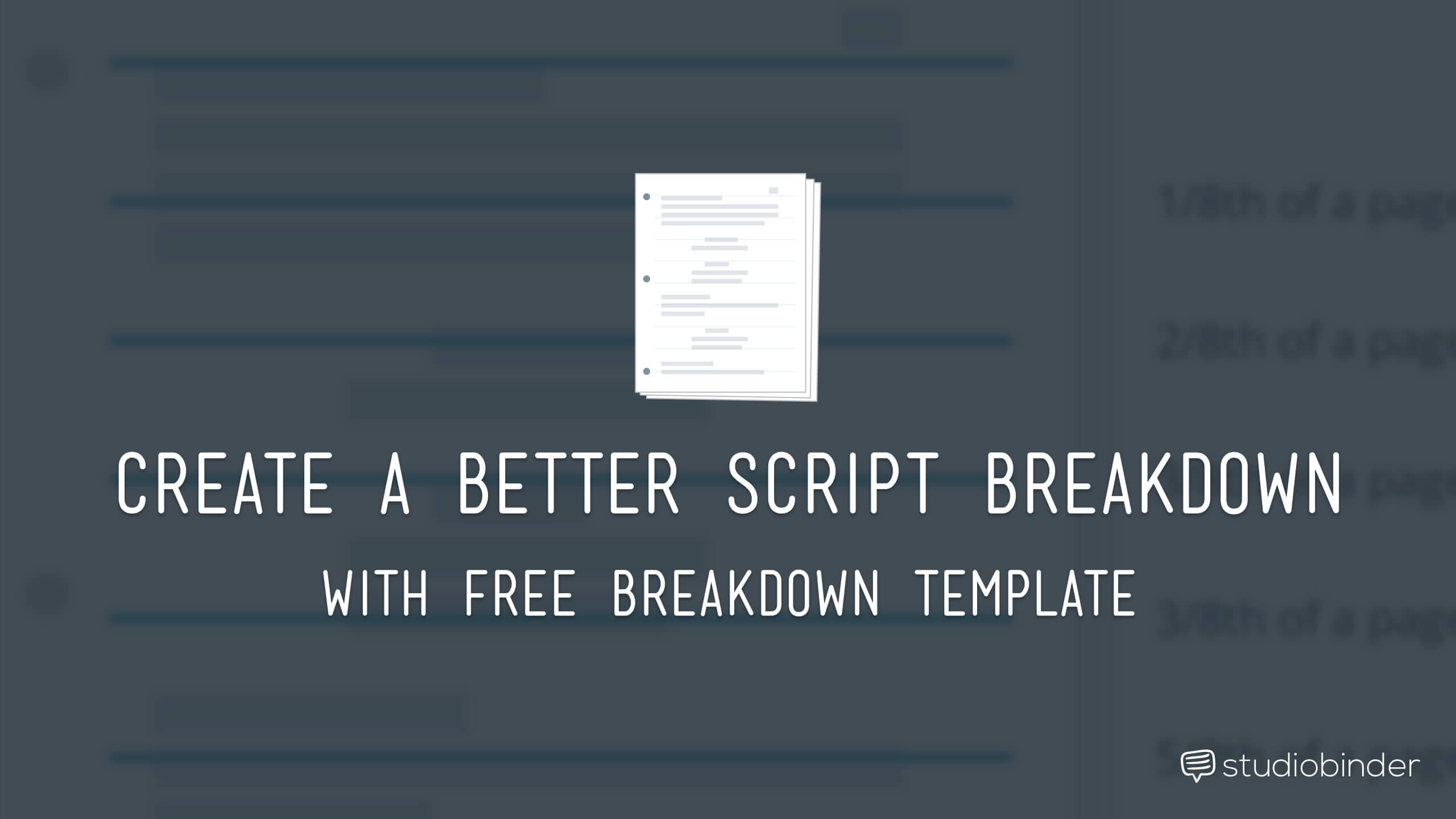
Marking a script is the process of highlighting all the key elements in a screenplay that will be included in a script breakdown sheet and lead to the creation of a stripboard and shooting schedule. In this article, we’ll review the conventions of marking a script.
1. Read the script as if you were a viewer
Before you mark anything on the script, read the script from an audience’s perspective. You only have one first impression of the story, so give yourself a chance to connect to it. Beyond the emotional connection, the more familiar you are with the story, the more likely you will be to identify all the elements once you begin marking the script.
Pro Tip: Who Marks the Script?
Scripts are marked by different people, at different stages of the project. The producer usually completes a simple script breakdown first in order to create a preliminary shooting schedule and budget. The 1st AD then conducts a more comprehensive script breakdown to create the stripboard, breakdown, and production shooting schedule. The DP marks the script to generate a shot list and equipment requirements. Other department keys (i.e. production design) will do their own analysis as well.
This will continue through pre-production, production and post-production and includes foley, music composition, voice-over and ADR work.
2. Scan the script for formatting errors
After you have read the script all the way through, read it once more, this time scanning for any formatting errors that may cause hiccups when importing the script file into scheduling software such as Movie Magic Scheduling. Here are some of the most common formatting errors to look out for:
- Scene locations should be phrased consistently throughout the script.
- Character names should be consistent as well.
- Scene headers should be formatted only as INT or EXT (interior or exterior).
- Scene headers should be formatted only as D or N (day or night).
- Scene numbers have been generated.
Learn more about how to Format a Screenplay at …. https://www.writersstore.com/how-to-write-a-screenplay-a-guide-to-scriptwriting/
3. Break Script Pages into 8ths.
Marking 1/8s of a page is exactly like it sounds. Divide every page into eight, 1 inch parts. This measurement is used to estimate the screen time and shooting time for a scene. Just make sure that you and your “scripty” (script supervisor) are on the same page . Sounds funny, but, it’s important that both of you measure scenes in exactly the same way. On a typical dialogue-heavy indie production, you can expect to shoot roughly 5 pages per day where one page equals one minute of screen time.
Some things that take longer to shoot: Stunts, Crowds, Busy Locations, Car Chases, Entrances and Exits, Action Sequences, Gunshots, Musical Performances, Practical Special effects, etc.
Pro Tip: The Trouble With Musical Performances
Be especially conscious of the screen-time:page count ratio for musical performances. Otherwise you may not budget enough time to shoot what you need. It’s common for screenwriters to summarize on-screen performances into brief one-liners like “Stuart performs his song.” It may be only a few action lines in the script, but the performance could take 2-3 minutes of screen time. The page count should reflect this and be rewritten as 2-3 pages as well. We suggest writing out all of the lyrics as dialogue, with plenty of beats, paragraph breaks, and descriptions .
4. Mark the script using color highlighters and pens
Again, the purpose of marking is to identify all the elements in a scene so they can included in the script breakdown sheet and shooting schedule. It’s standard to use highlighters and pens to identify each element. This is tedious and careful work. Missing elements can impact departments, so it’s important to be detailed.
You can find “standard” script breakdown colors for marking a script below. It is not essential that you use these colors, but it is important to be consistent and methodical. If you’re using custom script breakdown colors, make sure to create a legend on the script and breakdown.
Pro Tip: Creating New Element Categories
Depending on your project, you may want to create more tailored element categories and colors. For example, if you are shooting a horror film, you may want to define all the elements related to prosthetics. If you are shooting a western, you may need to add categories for horses and weapons. Just make sure to define the custom category and color in a legend.
Standard Script Breakdown Colors
| Type | Color | Marking Style |
| Cast – Speaking Roles | Red | Underline |
| Extras – Silent Roles | Yellow | Underline |
| Extras – Atmosphere | Green | Underline |
| Stunts | Orange | Underline |
| Special Effects | Blue | Underline |
| Sound Effects/Music | Brown | Underline |
| Vehicles & Animals | Pink | Underline |
| Props | Purple | Underline |
| Wardrobe | Black | Circle |
| Makeup & Hair | Black | Asterisk |
| Special Equipment | Black | Box Around |
| Production Note | Black | Underline |
Cheat Sheet for Script Breakdown Colors
5. Input Markings into a Script Breakdown Sheet Template
After marking the script, you’re ready need to input all of elements into a Script Breakdown Sheet, a summary list of all the elements in a scene. Since scheduling software like Movie Magic Scheduling can be a bit pricey, we created a created a free Script Breakdown Template. Just open the link and click File > Make a Copy to save it to your Google Drive. Download Breakdown Template
6.
With your script marked, you’re ready to start laying out your scenes into a stripboard (or production board). Stripboards essentially hold color-coded strips that represent the scenes of a script. The strips are reordered to ultimately become the shooting schedule.
Happy Filmmaking,
Dov Simens
XXXXX
Get Our Newsletter… FREE…
Don’t Waste 4-Years & $300K at a USC, UCLA or NYU Film Program…Please.

Why Wait? Start Your Career Right Now… Click.
www.WebFilmSchool.com

Learn Over & Over… Next Day Delivery
www.WebFilmSchool.com

August 8-9 & December 7-8 Next Live Course
www.WebFilmSchool.com
Keep Up To Date…. Join Our E-Mail List
http://webfilmschool.us10.list-manage.com/subscribe/post
Happy Filmmaking.

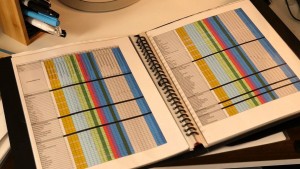
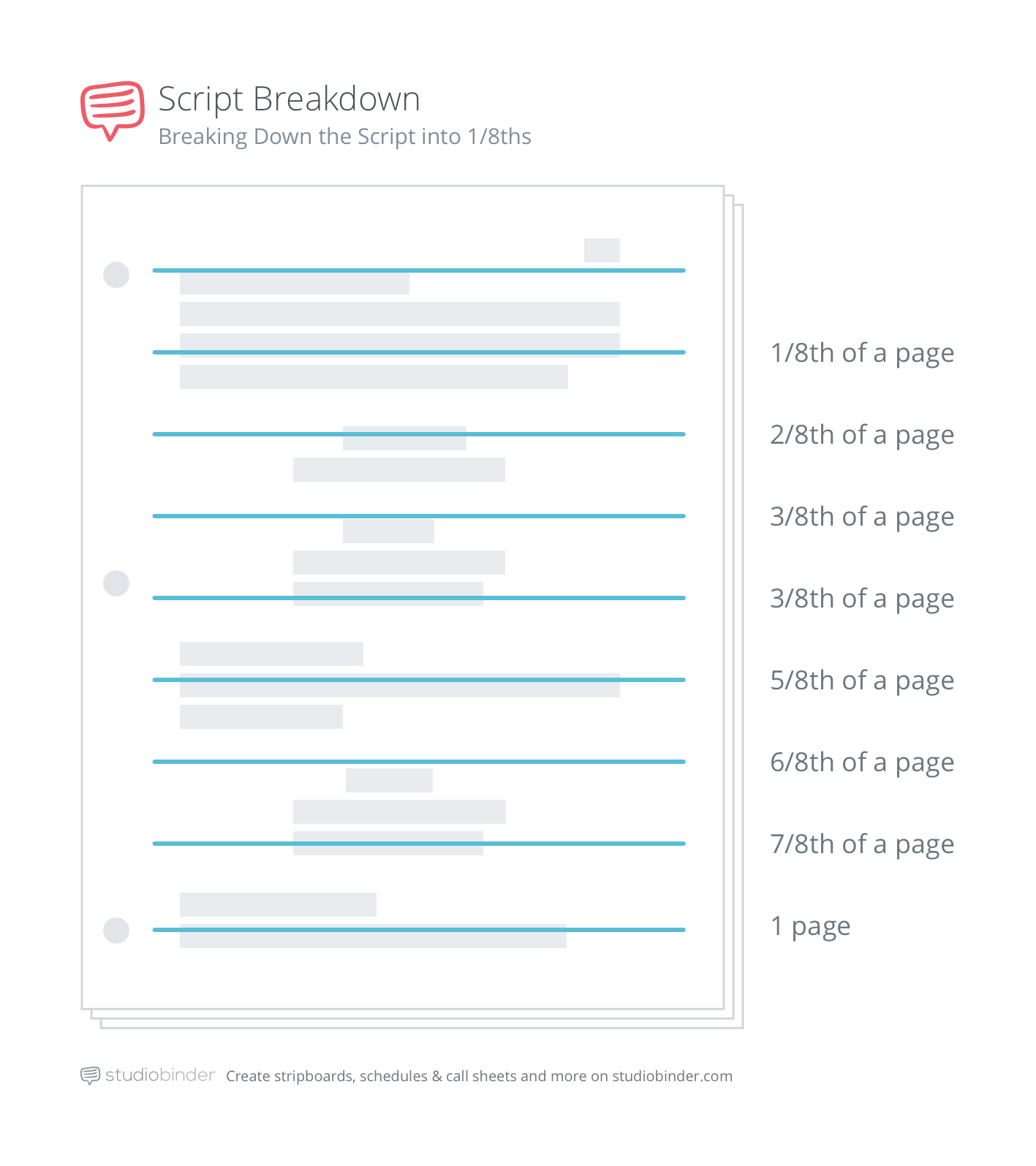
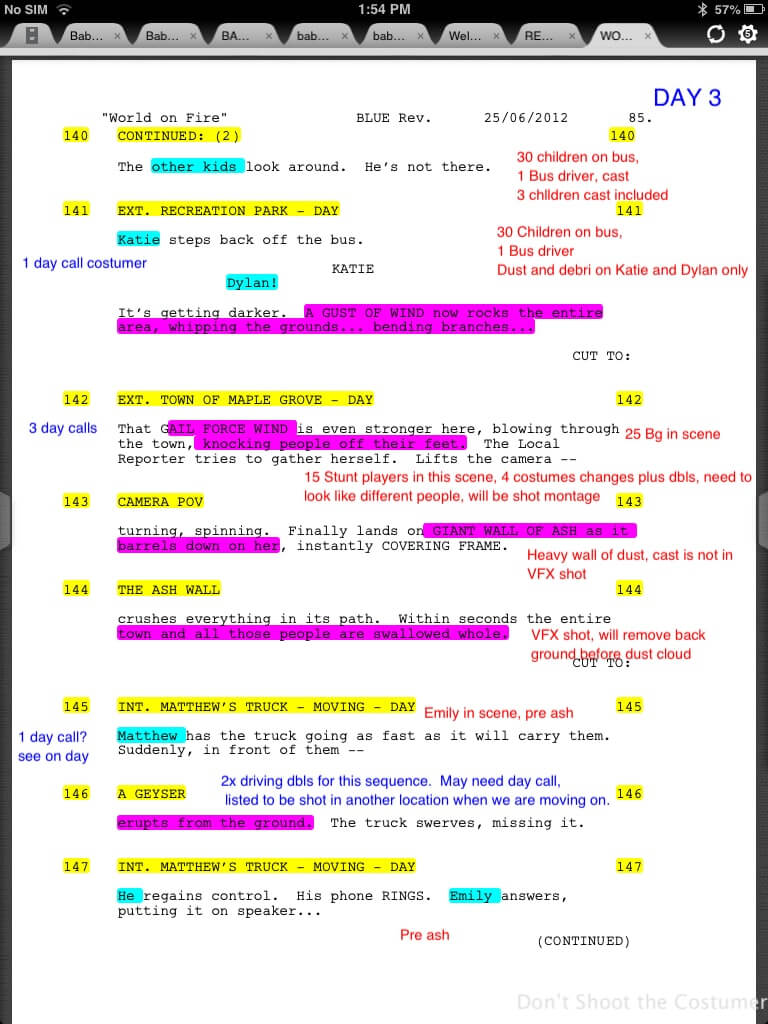
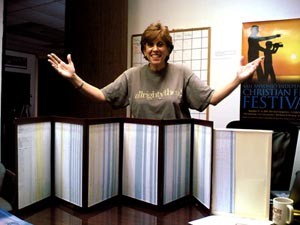
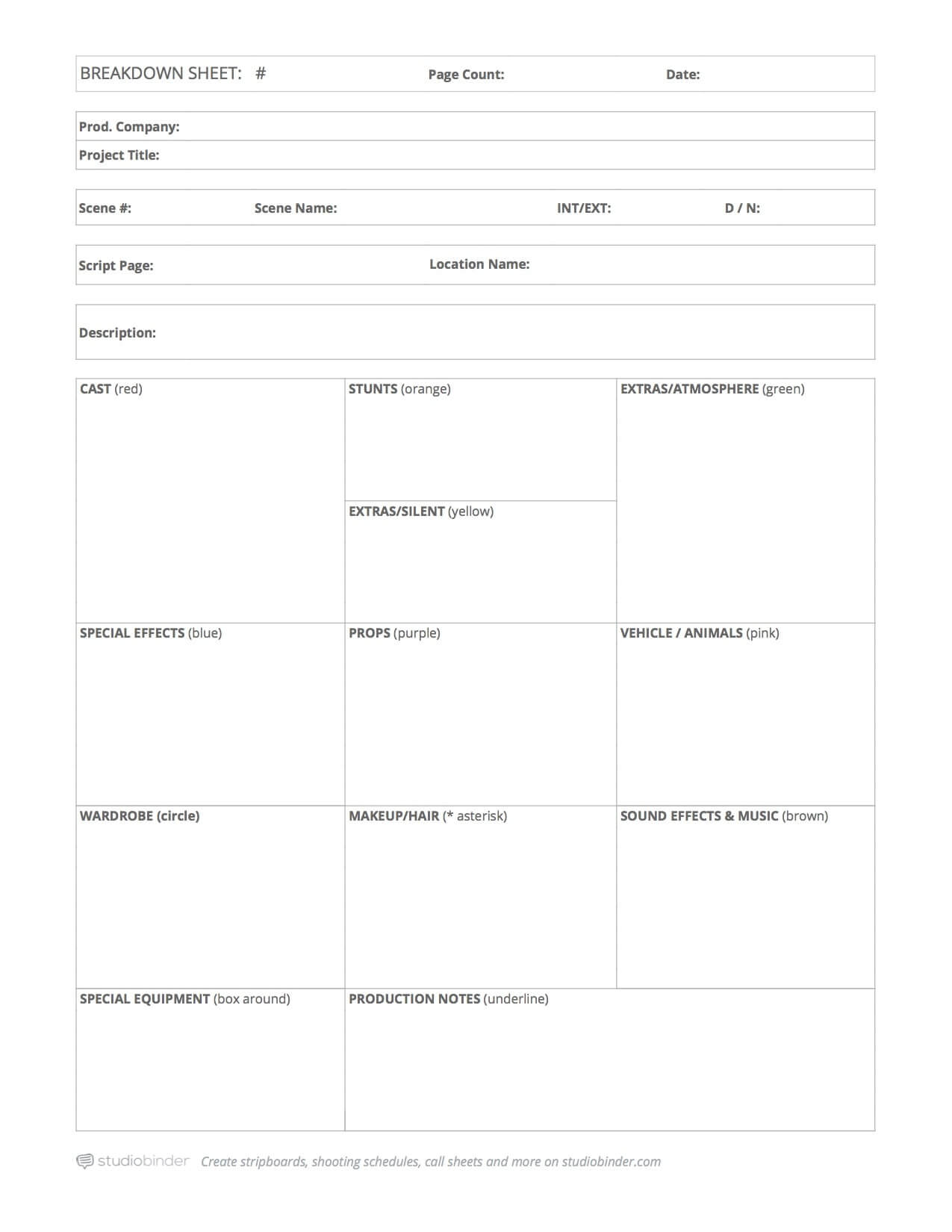





many links 404
time to update this blog before you recycle it again
otherwise it was VERY useful except for the dead links
AWESOME INFORMATION as always Dov! I am so grateful I attended your Film School. Thank you for doing what you do.
Thank you for an interesting and informative article. I recently read this blog https://www.agmglobalvision.com/nv-in-video-games-and-movies-p-I and was reminded of it when reading this article. I was wondering if what you described applies to the films described in this blog about films where night vision is used? These are some of my favorite movies.
By observing professional writers’ works, international students can learn many techniques and examples of academic writing https://www.lunwentop.net/meiguodaixie/ . These examples can serve as references for their future writing, helping them better understand the requirements and standards of academic writing. This learning process aids them in continually improving their writing skills.
Impressive! Discover more about our Brick Mailbox builders in Logan on our website
Thank you for sharing your experience. It adds depth to the conversation. If you want to learn more about door options, our website at Logan Door Shop has all the information you need.
Understanding the importance of a production board is a game changer for filmmakers. The step by step breakdown and tools shared here provide valuable insights into efficient script management and shooting schedules.
Best Overweight Containers Service in Trenton NJ
Bravo! You’ve managed to articulate such complex ideas with such clarity. When it comes to drywall repair and installation, our website is your go-to destination for quality service.
Wonderful. Your content is consistently exceptional. Find the perfect exterior doors Utah for your home.
Great article about directing. Thank you, Dov.
At one time, https://studyfy.com/ helped me with script work, they wrote my essay and some dialogues, which I then used and everyone liked